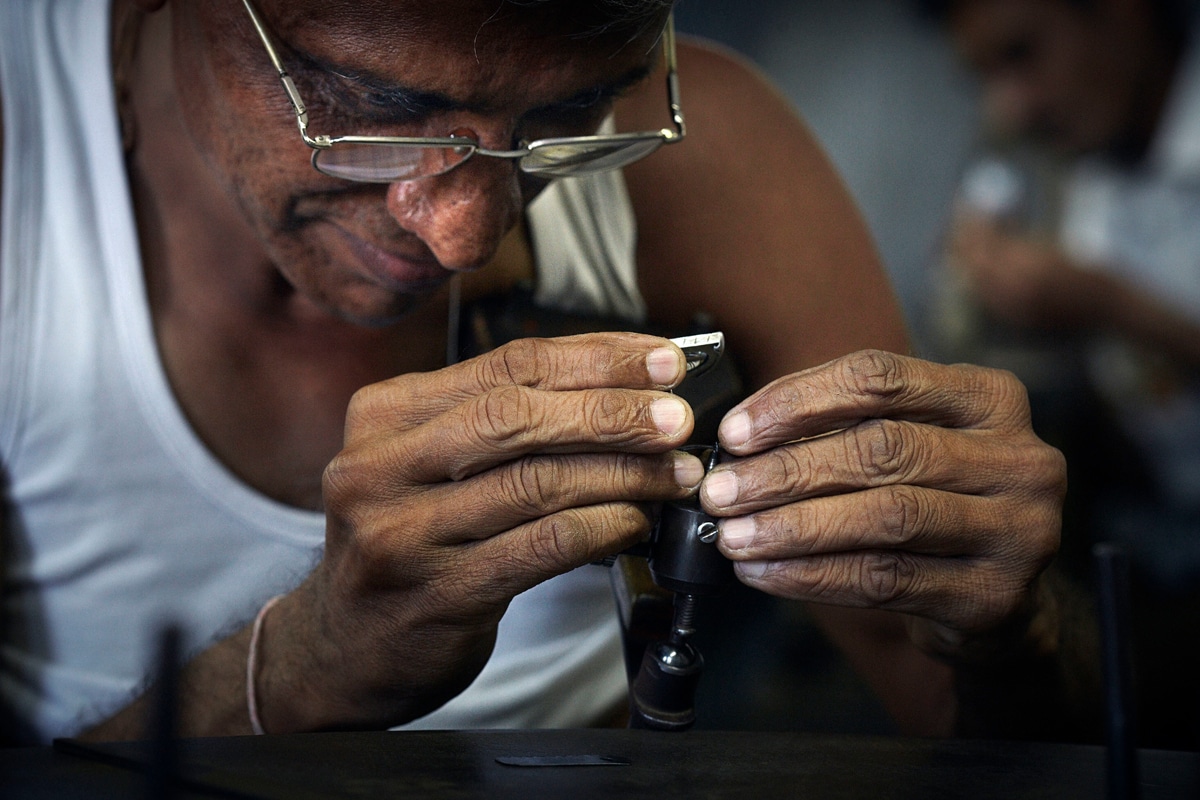Depreciation In Diamond Trade Pessimistic Scenario Due To US & China Stagnation
Due to US & China's slowdown in the demand ,diamonds aren't shinning in the market anymore.

The diamond trade has always been considered a highly lucrative business, it has been the symbol of love and luxury for centuries. The demand for diamonds in the United States and China has always been high, but recently, it has slowed down drastically. There are many factors that have contributed to this decrease in demand such as economic slowdown, changing consumer preferences, and increased competition. It is important to explore why the diamond trade is currently experiencing a slump and what the future may hold.

Recently, major auction houses in Belgium and Dubai have put a hold on actions not only De Beers has also decided to put off their auction because Indian diamond companies are unenthusiastic to join after an excessive reduction of demand for polished diamonds from China and the US
It has been mentioned by Indian companies that they are less likely to participate in the auctions unless they notice some positive changes in the demand.
After careful consideration, of the market for the traders, The Beers have decided to conduct an amalgamation of the main and the interim action also known as the 5th and 6th cycle
According to the major miners’ decline in demand and an uncertain state of when the situation is going to revive the diamond market is extremely anxious they continue to put stress on how US mid-segment diamonds are at a stagnant state negatively impacting the demand.

Reasons of slowdown
Economic Slowdown:
One of the most significant reasons for the decline in diamond sales is the global economic slowdown. When consumers do not have the confidence to spend money, they cut back on their expenses, which include luxury items like diamonds. In addition, recent trade tensions between the US and China have resulted in an economic slowdown that has affected consumption patterns in both these countries, leading to less demand for diamonds.
Consumer Preferences:
Another factor contributing to the decline in demand for diamonds is changing consumer preferences. The new generation of consumers does not always follow traditional beliefs and customs. A shift in focus from owning material objects to spending on travel, experiences, and social causes has been observed amongst millennials and Gen Z.
Their priorities are different from previous generations – they value sustainability, ethical practices, and social responsibility. Many younger consumers now view diamonds as a luxury item that is no longer necessary or a symbol of true love and devotion. Furthermore, lab-grown diamonds which are created through technological advancements are becoming increasingly popular alternative choices to naturally mined diamonds.
Increased Competition:
The diamond market has always been competitive, but new entrants in this field are shaking the industry to its core. This increasing competition has led to a decrease in prices, making diamonds less attractive as an investment option. There are also synthetic diamonds, which are providing an alternative for buyers who may be reluctant to pay high prices for natural diamonds. Synthetics provide an affordable and ethical alternative.

Impact on the Diamond Industry:
The decline in demand for diamonds has had a ripple effect across the diamond industry. It has led to job losses, closures of mines and processing factories creating an oversupply of diamonds in the market. The excess supply has lowered the prices even further, which has created a vicious cycle by negatively affecting the business models of diamond merchants, manufacturers, and wholesalers.
The difficulties facing the diamond business go far beyond the price decline. The midstream is not profitable enough. The rough-price cutbacks made by De Beers in June were insufficient to restart trading, and cutters are not getting a return on their rough purchases. Purchasing polished is preferable, especially given their persistently high inventory levels. As of July 1, there were 1.5 million diamonds listed on RapNet, a 13% rise from the previous year.
To rebalance the market, manufacturers have cut polished production by about 30%. To keep staff busy, cutters are also switching to smaller, less expensive goods. As a result, despite weak sales and steadily declining prices, production of 0.25 to 0.50-carat diamonds continues. In the first half and throughout the last year, the RAPI for 0.30-carat diamonds fell by 12.2% and 20.9%, respectively.
The second half will see a further decline in sluggish sales as manufacturers choose profitability above turnover. Professional suppliers are looking for initiatives that can help them increase their profits. As mentioned in the June Rapaport Research Report, one direction that is picking up steam is the use of ethically sourced, traceable diamonds. Manufacturers must show how their products offer value to the more discerning and price-conscious distribution network.
According to industry experts, the diamond industry is going through one of the worst crises in its history. The industry leaders are struggling to find ways to reverse the slump in demand, especially since it has been happening over a prolonged period.
 Steps Taken by the Diamond Industry:
Steps Taken by the Diamond Industry:
The diamond industry has been forced to take drastic measures to cope with the reduction in sales, including cutting costs, reducing production, and exploring alternative marketing strategies. In addition, the diamond industry must now also face the challenge of differentiating their product offerings and finding ways to create additional demand. The most common strategy has been to shift focus towards the development of lab-grown diamonds, which is seen as an ethical alternative to natural diamonds. This shift in attention is providing consumers with an alternative to naturally mined diamonds but can also threaten the long-standing value of natural diamonds.
However, there appears to be a growing awareness that a sustainable future for the industry could lie within creating ‘fair’ diamonds – where diamonds are mined ethically and not secured through conflict or exploitation, but a lot of work is still required in achieving this objective.
The diamond trade is facing a slump as the global economic slowdown, changing consumer preferences, and increased competition has impacted the industry’s demand in the US and China. To combat the decline in sales, the diamond industry is focusing on the development of lab-grown diamonds as an ethical and sustainable alternative to natural diamonds. However, a collaborative effort is required amongst the industry players to ensure sustainable mining practices are adopted, such that “fair diamonds” become a long-term value investment and ethical choice for consumers around the world.
Proofread & Published By Naveenika Chauhan




